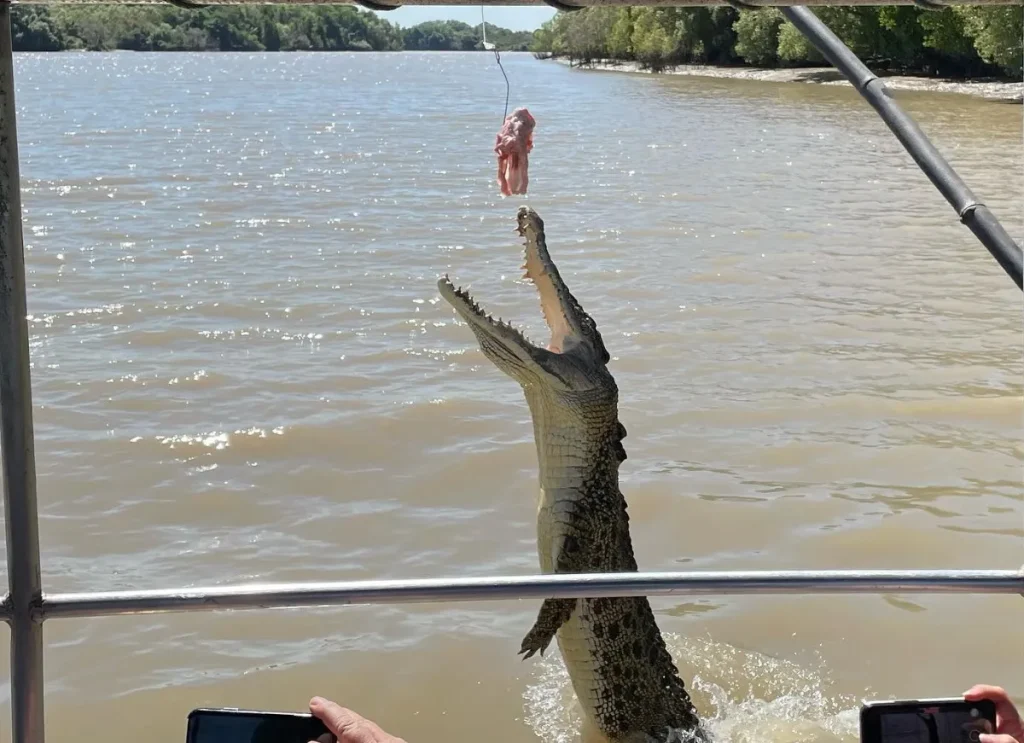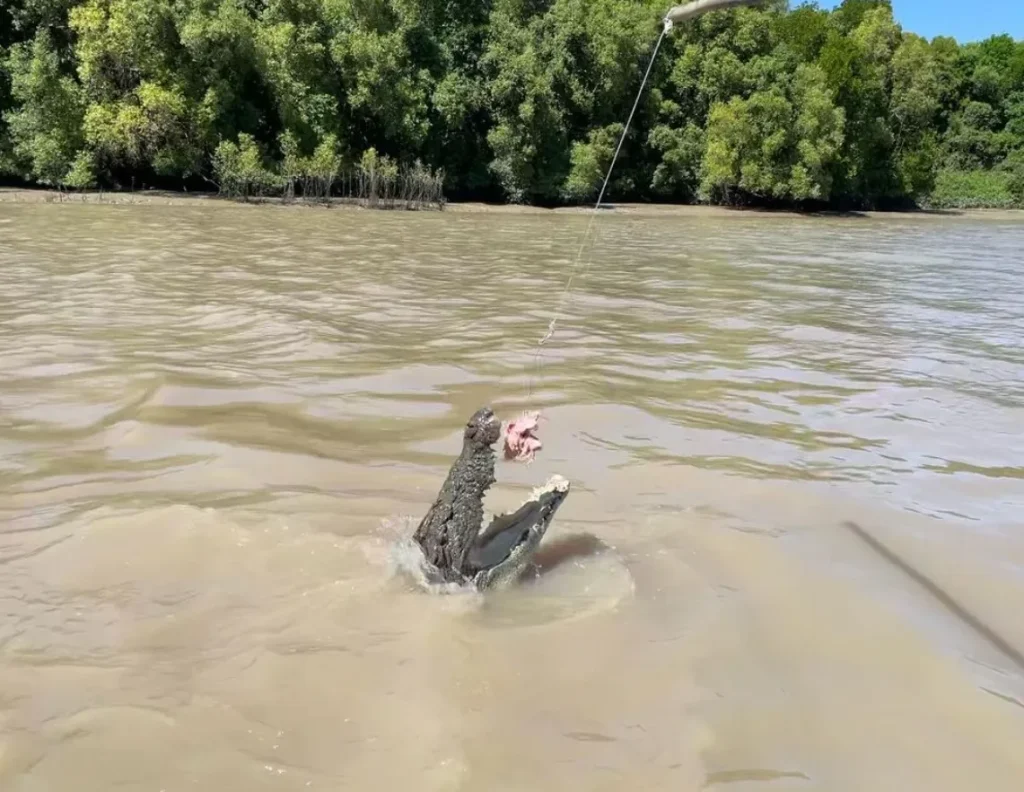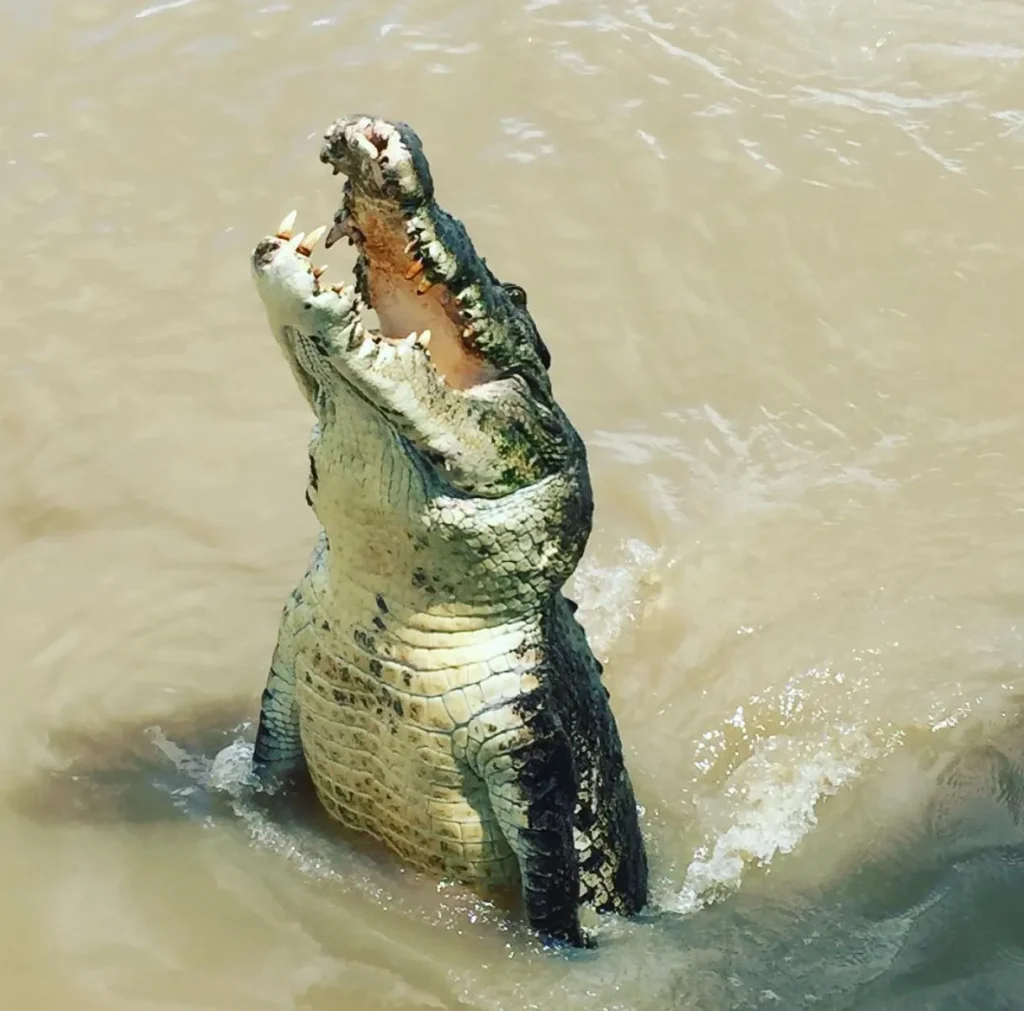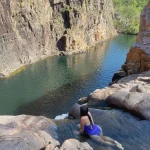Saltwater crocodiles (Crocodylus porosus) are the most feared predators in the Northern Territory. These big buggers can be the largest crocodile species in the world and are known for their incredible power, territorial nature and during the wet season, their amazing jumping ability. The breeding season brings big changes in their behavior, males become more aggressive, competing for mates and territory and females prepare for nesting and raising their young.
The Northern Territory, especially around the Adelaide River and Kakadu National Park, is the place to see this behavior. The Crocodile Specialist Group and wildlife researchers have studied this behavior closely and have a good understanding of how crocodiles use their jumps, power and size to dominate their territory during the breeding season.
Breeding Season: A Time of Change

The breeding season for saltwater crocodiles is linked to the wet season in northern Australia, particularly in the Northern Territory where the rains turn the landscape into a green, water filled wonderland. During this time crocodiles take advantage of the rising water levels to expand their territory and increase their mating chances. This season is from November to March with the peak of crocodile activity in the wetter months.
For males this is a time of intense competition. Their behavior changes dramatically as they enter the breeding phase. Male crocodiles will fight for the best territory which has access to females and prime nesting sites. These fights can be brutal, often leaving significant bite marks on rivals. The bite of a crocodilian like the saltwater crocodile is the strongest of any animal and they can overpower their opponents quickly. Their territorial displays, particularly their jumping, are key to both dominance and attracting mates.
Females on the other hand focus on finding a mate and a safe nesting site. Females can be choosy and will watch the males’ displays of power and physical strength. The size and health of the male is often the deciding factor in their choice.
Territorial Displays: Jumping for Dominance
The jumping of crocodiles during the breeding season is one of the most impressive displays of strength in the animal kingdom. While crocodiles are often associated with lurking in the water, their jumping ability is just as impressive. Males use this behavior to dominate other males and to show off to potential mates. These territorial leaps serve multiple purposes, to scare away competitors and to impress females with their physical prowess.
Jumping has been studied extensively by the Crocodile Specialist Group and other crocodilian researchers. These displays are not just for show but are fundamental to the crocodile’s success. Crocodiles have evolved over millions of years to be top predators and their ability to jump out of the water is just one of the ways they have adapted to their environment.
Estuarine crocodiles (Crocodylus porosus) are famous for this behaviour. They’ve been seen using their powerful tails to launch themselves out of the water to catch prey, during aggressive displays and in mating rituals. The bigger the crocodile, the bigger the jump, which is why body size is so important during breeding season.
The Evolution of Crocodile Behaviour: Adaptation is Key
Crocodiles have been around for millions of years, they are one of the oldest living species on earth. Their success as a species can be attributed to their ability to adapt to their environment, including their breeding behaviour. The molecular divergences within crocodile species, as shown in studies based on their morphological dataset, have shown that behaviours like territorial jumping and aggressive displays have evolved over time to ensure their survival.
Their ability to live in both freshwater and saltwater and their impressive physical attributes (strongest bite) has made them one of the top predators. This has led to the proliferation of their species with saltwater crocodiles being the largest and most dominant.
The Northern Territory Government has acknowledged the importance of crocodile conservation and are working to protect them and ensure they continue to thrive in the wild. By managing human interaction with these animals during breeding season they help balance tourism and conservation.
Mating Rituals and Courtship Displays

During breeding season, male crocodiles are not only fighting rivals but also trying to attract females. Their courtship rituals are surprisingly complicated for such tough animals. Crocodiles communicate with potential mates through a series of vocalisations, physical displays and of course, jumping.
The vocalisations, often described as low frequency bellows, help attract females and assert dominance over other males. Males may also do physical displays such as body rolling and tail slapping to show their strength. The female, watching from a distance, will choose the male she thinks is the fittest based on these displays.
Nesting and Female Behaviour
Once mating has occurred, female crocodiles turn their attention to nesting. Finding a good nesting site is key to the survival of their young. Females generally look for elevated, well drained areas close to water as these areas provide the best protection for their eggs from flooding and predators. After laying their eggs, female crocodiles are fiercely protective of their nests and often stay close by to guard them from threats.
Interestingly, female crocodiles also use the water temperature to regulate the incubation of their eggs. Warmer water means faster incubation times and the female crocodile may adjust the location of her nest based on environmental conditions. Another example of the evolutionary success of crocodiles.
Freshwater vs Saltwater Crocodiles

Saltwater crocodiles are famous for their size and aggression but freshwater crocodiles (Crocodylus novaeguineae) behave very differently during mating season. Freshwater crocodiles are smaller and less territorial than saltwater crocodiles and don’t jump like them. But they have their own mating rituals too, vocalizations and physical displays.
Both play important roles in their ecosystem and while they live in the same areas like rivers in the NT they rarely compete with each other. This coexistence between species of crocodiles is due to millions of years of evolutionary history and molecular divergences that allowed them to adapt to different niches in the same environment.
The Role of Crocodiles in the Ecosystem
Crocodiles are apex predators, they sit at the top of the food chain in their environment. So they play a critical role in maintaining the balance of the ecosystem they live in. In the NT crocodiles control fish and other animal populations so no one species dominates the environment.
During mating season crocodiles are even more important to the ecosystem as their aggression and territorial disputes keep populations in check. This contributes to the health of the rivers and wetlands they live in and other species that depend on those environments.
Crocodile Attacks: Higher Risk During Mating Season

While crocodiles are always dangerous the risk of crocodile attacks increases during mating season. Male crocodiles become more aggressive and territorial and see humans and other animals as threats to their territory. This aggression and their powerful bite makes them more dangerous during this time.
Tourists and locals alike should exercise extreme caution when near rivers and water bodies in the NT during the wet season. The NT Government has put in place various safety measures like warning signs and restricted access to certain areas to minimize the risk of attacks.
Conservation and the Future of Crocodiles

Conservation has played a big role in protecting crocodiles especially saltwater crocodiles which were once endangered due to hunting and habitat loss. The Crocodile Specialist Group in partnership with the NT Government has worked to protect crocodile habitats and keep their populations stable.
Conservation of crocodiles also involves managing human-crocodile interactions especially during mating season when crocodiles are most aggressive. Sustainable tourism like guided jumping crocodile cruise tours helps raise awareness about crocodile conservation and provides a safe way for people to see these amazing creatures in the wild.
Conclusion
Jumping crocodiles during mating season is a real treat to see one of the most powerful and ancient predators on the planet. From their territorial displays and battles to their courtship rituals, crocodiles put on a show that’s essential to their survival and success.
If you want to see it for yourself, the Northern Territory is the place to be. Guided crocodile tours from Darwin, especially during the wet season, is the safe and educational way to see crocodiles in their natural habitat.
FAQs
When is the best time to see crocodile behavior during mating season?
Best time to see crocodiles during mating season is during the wet season, November to March when they are most active and territorial.
Why do crocodiles jump out of the water?
Crocodiles jump out of the water to assert dominance, especially during mating season. It’s a display of strength to other males and potential mates.
Are crocodiles dangerous during mating season?
Crocodiles are more dangerous during mating season as males become more territorial and aggressive. Stay away from water and follow safety guidelines during this time.
Where can I see crocodiles during mating season?
You can see crocodiles during mating season by taking a guided tour along the rivers of the Northern Territory, Adelaide River and Kakadu National Park.
How do saltwater and freshwater crocodiles differ during breeding season?
Saltwater crocodiles are bigger and more aggressive, they jump to assert dominance. Freshwater crocodiles are smaller and less territorial, they do courtship rituals.

